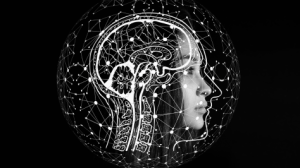In today’s hyper-connected world, taking a break from digital overload is no longer a luxury—it’s a necessity. As we step into 2025, more and more people are realizing the importance of a digital detox to restore balance, reduce stress, and improve overall well-being. In this post, we’ll explore what digital detox means in 2025, why it matters, and share practical tips on how you can unplug and recharge your mind and body.
Why Digital Detox Matters in 2025
Digital devices have become an integral part of our lives, fueling our productivity and keeping us connected. However, constant notifications, endless scrolling, and the pressure to stay online can lead to burnout, anxiety, and even disrupted sleep patterns. A digital detox is a deliberate period of time when you disconnect from screens to focus on real-world interactions and self-care.
Key Reasons to Consider a Digital Detox:
- Improved Mental Health: Reduced screen time can help lower stress levels and alleviate anxiety.
- Enhanced Productivity: Stepping away from digital distractions can boost focus and creativity.
- Better Sleep: Limiting exposure to blue light, especially before bed, can improve sleep quality.
- Stronger Relationships: Spending more time face-to-face can deepen your personal connections.
Recognizing Digital Overload
Before you embark on a digital detox, it’s important to recognize the signs of digital overload. Ask yourself:
- Do you feel constantly anxious or stressed when your phone buzzes?
- Are you spending more time online than with your loved ones?
- Do you often lose track of time while scrolling through social media?
If you answered “yes” to these questions, a digital detox might be just what you need.
The Benefits of a Digital Detox
Taking regular breaks from technology can have profound impacts on your life. Here are some benefits you can expect:
- Enhanced Focus and Clarity: Disconnecting allows your mind to rest and refocus on tasks without the constant barrage of notifications.
- Increased Creativity: When you step away from screens, you create space for creative thinking and problem-solving.
- Better Physical Health: Reduced screen time often means more time for physical activities, which can improve overall health.
- Deeper Personal Connections: Engaging in face-to-face conversations can strengthen relationships and foster a sense of community.
Practical Digital Detox Tips for 2025
Embarking on a digital detox doesn’t mean you need to completely disconnect from the digital world forever. Instead, it’s about finding a balance that works for you. Here are some actionable tips to help you get started:
1. Set Clear Boundaries
- Designate Tech-Free Zones: Create areas in your home where digital devices are not allowed. For example, the bedroom or dining room can be a sanctuary for relaxation and conversation.
- Establish Tech-Free Times: Decide on specific times of the day when you will turn off your devices. Try implementing a “no screens” rule during meals or the hour before bedtime.
2. Monitor Your Screen Time
- Use Digital Wellbeing Tools: Many smartphones now come with built-in screen time trackers that can help you monitor and limit your usage.
- Set Usage Limits: Configure your device settings to limit the time spent on certain apps, especially those that tend to pull you in for hours on end.
3. Create a Digital Detox Routine
- Start Small: Begin by setting aside just 30 minutes a day to disconnect. Gradually increase this time as you become more comfortable.
- Schedule Regular Breaks: Consider setting a weekly or monthly digital detox day. Use this time to engage in offline activities like reading, hiking, or simply spending quality time with loved ones.
4. Engage in Offline Activities
- Pursue a Hobby: Whether it’s painting, gardening, or cooking, engaging in a creative activity can be a refreshing break from digital stimuli.
- Exercise Regularly: Physical activities such as walking, yoga, or dancing not only boost your health but also help clear your mind.
- Spend Time in Nature: Immersing yourself in natural surroundings can dramatically reduce stress and restore mental clarity.
5. Stay Mindful and Present
- Practice Mindfulness Meditation: Mindfulness exercises can help you stay present and reduce the urge to constantly check your devices.
- Keep a Journal: Documenting your feelings and experiences during your digital detox can provide insights into your relationship with technology and help you develop healthier habits.
6. Curate Your Digital Environment
- Declutter Your Devices: Unsubscribe from unnecessary emails, delete unused apps, and organize your social media feeds. A cleaner digital space can reduce the impulse to constantly check your phone.
- Set Notifications to “Do Not Disturb”: Limit interruptions by turning off non-essential notifications during your designated tech-free times.
Balancing Digital Life with a Digital Detox
Achieving balance doesn’t mean you have to abandon technology completely. In 2025, the goal is to use technology mindfully and intentionally. Here are a few additional strategies to maintain a healthy balance:
- Mindful Consumption: Be selective about the content you consume online. Focus on information that enriches your life rather than just passing time.
- Scheduled Social Media: Allocate specific times to catch up on social media instead of checking it sporadically throughout the day.
- Tech for Good: Use technology to enhance your well-being—listen to podcasts that motivate you, follow inspirational figures, or participate in online communities that support your personal growth.
How to Stay Motivated During Your Digital Detox
Maintaining a digital detox can be challenging, especially when the urge to check your phone creeps in. Here are some motivational tips to help you stay on track:
- Set Achievable Goals: Start with small, manageable goals and celebrate each milestone. Whether it’s one hour of screen-free time or a full day without your phone, every achievement counts.
- Reward Yourself: Create a reward system for sticking to your digital detox plan. This could be anything from a favorite treat to a relaxing spa day.
- Share Your Journey: Connect with friends or join a community of like-minded individuals who are also practicing digital detox. Sharing your experiences can provide encouragement and accountability.
Looking Ahead: The Future of Digital Detox
As technology continues to evolve, so will our relationship with it. In 2025, digital detox isn’t about rejecting technology—it’s about reimagining how we interact with it. By incorporating regular breaks and setting healthy boundaries, we can harness the benefits of technology without letting it control our lives.
Digital detox practices are becoming increasingly popular as people recognize the importance of mental and physical well-being in our fast-paced, digital-centric society. With practical tips, mindful strategies, and a commitment to balance, you too can make digital detox a seamless part of your daily routine.
Conclusion
Digital detox in 2025 offers an exciting opportunity to reclaim your time, boost your productivity, and enhance your overall well-being. By setting clear boundaries, engaging in offline activities, and practicing mindfulness, you can create a healthier, more balanced digital life. Remember, the goal isn’t to eliminate technology from your life but to ensure it serves you, rather than the other way around.
Embrace the power of a digital detox and enjoy a life where technology enhances your experiences without overwhelming them. Whether you’re a busy professional, a parent, or simply someone looking to improve your quality of life, these practical tips can help you thrive in a digitally saturated world. So, why not start today? Unplug, unwind, and discover the benefits of living a more mindful, intentional life in 2025.
By following these digital detox tips, you can make the most of your time and reconnect with the world around you. Let 2025 be the year you take control of your digital habits and prioritize your well-being. Happy detoxing!


